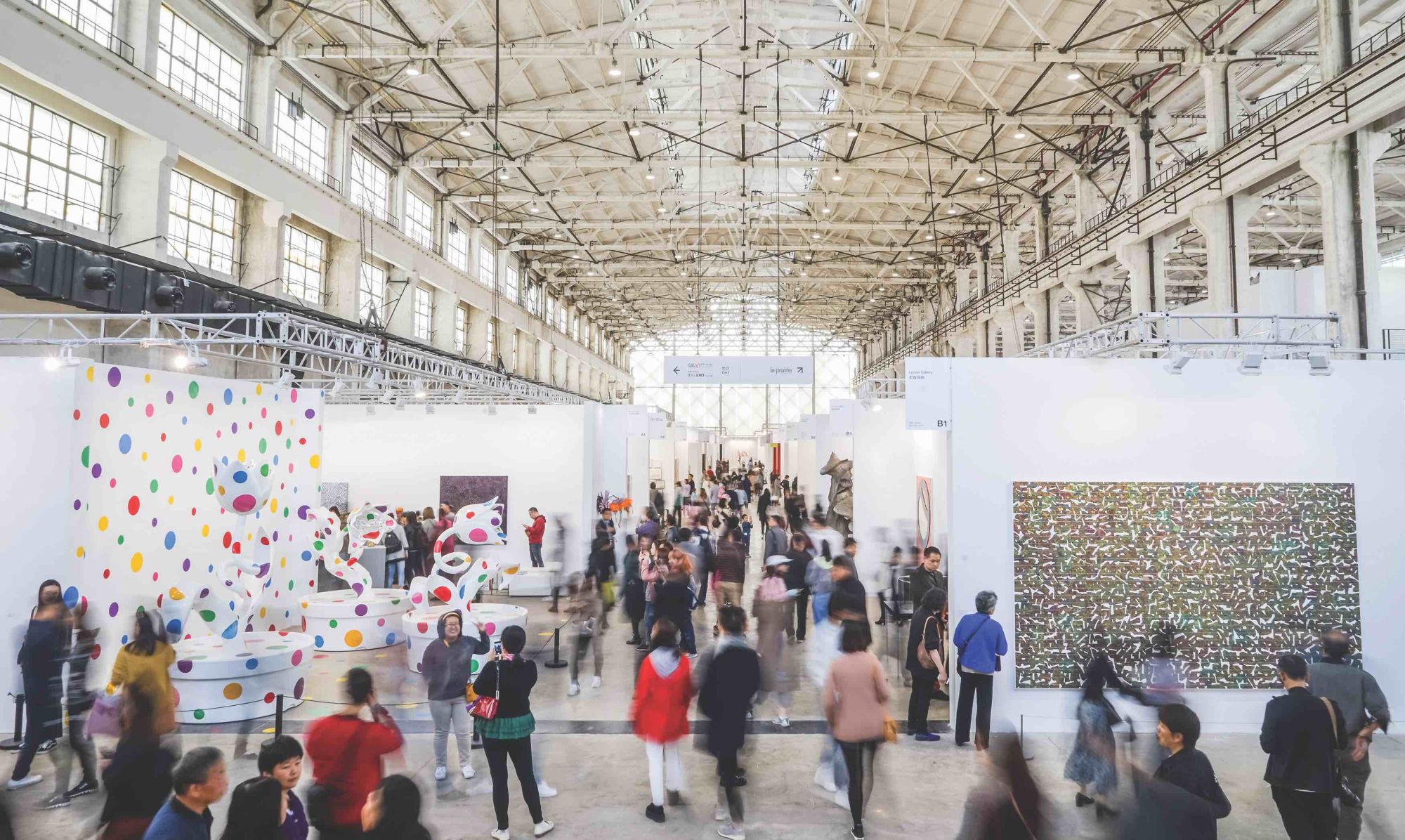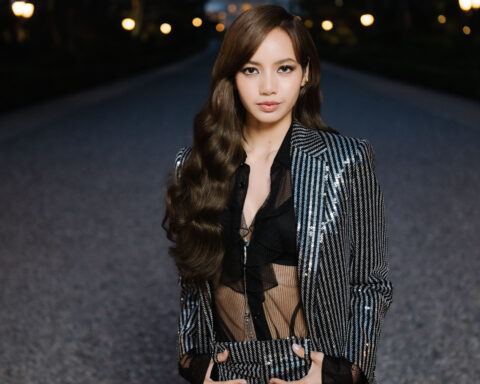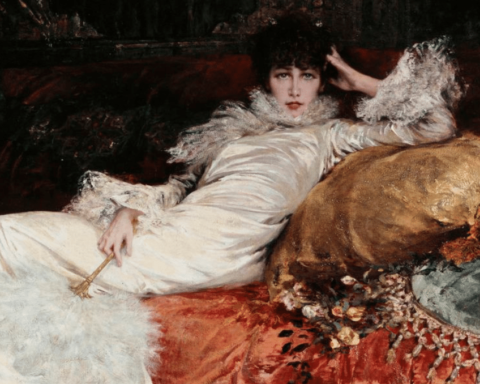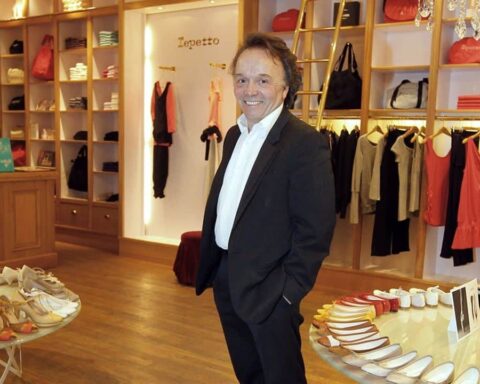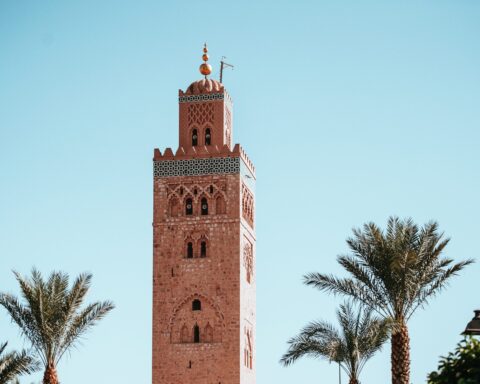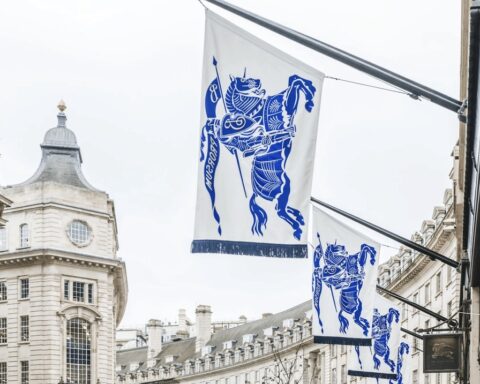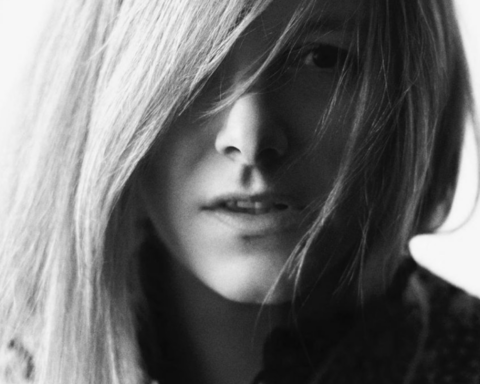[vc_row njt-role-user-roles=”administrator,armember”][vc_column][vc_column_text]
While Europe remains confined, Asia rejoices in the shopping frenzy sparked by the annual Shanghai Art Week, held November 19-22, 2020. For the occasion, two contemporary art fairs – West Bund Art & Design and Art 021 – were organized in the megalopolis.
Marked last year by the inauguration of the Shanghai Pompidou Center, the importance of Shanghai Art Week 2020 is simply due to the fact that it is the first global event to be held physically, at a time when all exhibitions are dematerialized. The Art 021 fair was held in the middle of the city of Shanghai, in the Exhibition Center, which welcomed 83 exhibitors, 60% of whom were Chinese. The West Bund Art & Design fair took place in the new museum district, bringing together 51 different galleries.
The magnitude of this event is explained by the fact that Shanghai Art Week is encouraged by the city authorities, as recalled by the co-founder of Art 21 Kylie Wing, also a collector and influencer : “The Shanghai government recognizes that contemporary art is an important thing, and as such, facilitates transactions, the transportation of works, with free zones and more accommodating taxes.” According to the muse of the Dior brand, “Art 021 is also linked to a certain art of living. We organize many cross-functional projects with luxury brands.”
If business is going well for the Art 21 fair, the figures achieved by the West Bund stands are also very satisfactory. David Maupin, a member of the multinational gallery Lehmann Maupin, noted in particular that the majority of his stand had been sold at prices between 35,000 and 600,000 dollars. Similarly, the company Hauser & Wirth sold a painting by Zhang Eli to “an important private Chinese museum” according to Lihsin Tsai, director of the Hong Kong firm. Zhang Eli’s works are usually sold between $250,000 and $500,000.
These transactions confirm the buying frenzy that Shanghai Art Week 2020 has been experiencing. According to Jacky Ho, art director at Christie’s Hong Kong, “Many Chinese collectors are hungry for current creation after the period of confinement. They want to see real art. Moreover, the contemporary art public has matured in China. They want rare and fresh things on the market. They are interested in current world contemporary art, as shown by our next sale on December 2 in Hong Kong.”
This revival of the contemporary art market in China is certainly explained by the change in the target audiences, younger than before. Kylie Wing insists in this sense on the subject of Shanghai Art Week: “We have a young audience, who appreciate new modes of expression, usually not very commercial, installations, videos, etc. We have a young public, who appreciate new modes of expression, usually not very commercial, installations, videos, etc.” Similarly, the director of the UCCA art center in Beijing, Philip Tinari, estimates 1,500 “young donors who follow the current creative scene assiduously.”
The offer made on the art market has obviously adapted to this renewal of demand among young consumers. For example, the fairs of Shanghai Art Week included mainly Chinese works of art, but not only. The Parisian gallery Balice-Hertling, for example, sent eight paintings by the French artist Julie Beaufils to Shanghai, “all sold within the first half hour of the fair, among others to the M Woods Museum in Beijing” according to Daniele Balice, for a value between 5,000 and 13,000 euros. Similarly, two galleries in Beijing and Hangzhou sold “about thirty works, between 4,000 and 120,000 euros, including several watercolors by the Franco-Cameroonian artist Barthelemy Toguo around 25,000 euros” according to their director, Hadrien de Montferrand.
All in all, the current creations continue to generate a certain amount of interest. The founder of the Sifang Art Museum, Lu Xun, observes that the contemporary art market “is growing impressively.” The Shanghai Art Week 2020 can be seen as a symbol of the economic health of the contemporary art market. To qualify the event, Philippe Tinari adds that “this year’s Shanghai Week was a culture shock. As if we had returned to the pre-pandemic era.”
Read also > A NEW COLLECTION OF DECORATIVE ITEMS FOR THE HOME BY CARTIER
Featured Photo : © Tatler Hong Kong, foire de Westbund[/vc_column_text][/vc_column][/vc_row]

